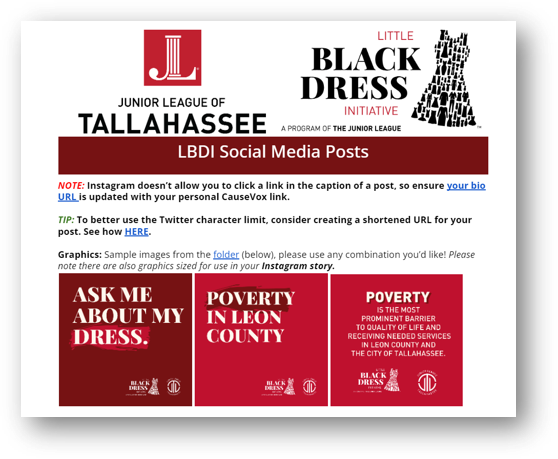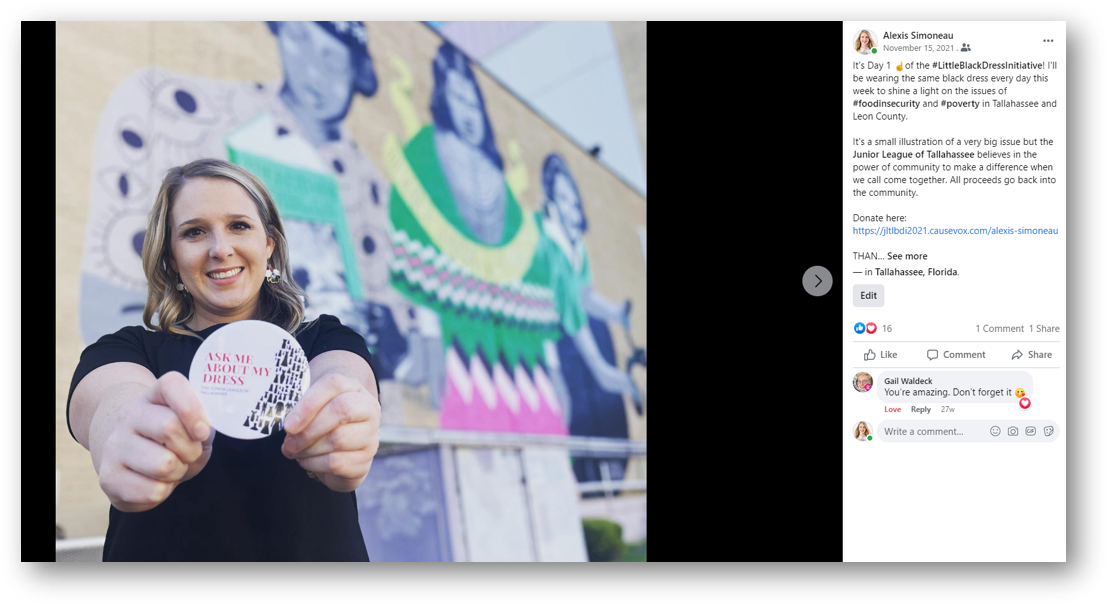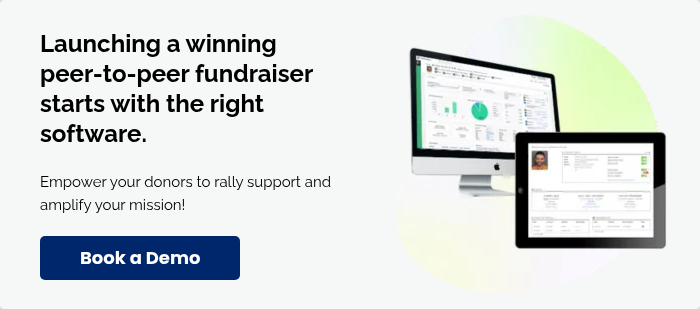
Have you ever tried a restaurant just because a friend said it was good? Or, maybe you’ve watched a movie without knowing anything about it, except that your sister told you she couldn’t look away. We’re naturally inclined to follow the recommendations of people we trust most, and this inclination is part of what makes peer-to-peer fundraising so successful.
Before you start thinking, “Peer-to-peer fundraising can’t possibly beat an engaging event” or “Nonprofits need influencer-level supporters to host a successful P2P campaign,” think again. Peer-to-peer campaigns raise 50% more, on average, than traditional efforts. The only question left is how to get started.
In this guide, we’ll answer that question (and so many more!) by covering the following topics:
- Peer-to-Peer Fundraising FAQs
- Types of Peer-to-Peer Fundraising Campaigns
- How to Run a Successful Peer-to-Peer Campaign
As you navigate this guide, keep in mind that the right technology is the key to effectively managing a peer-to-peer fundraiser. If you don't already have a CRM that can handle this, check out our guide on how to switch!
What is Peer-to-Peer Fundraising?
Peer-to-peer fundraising is a method of raising support for your nonprofit in which you ask existing donors to raise funds from their networks on your nonprofit’s behalf. Here’s how it works:
- Your nonprofit creates a central campaign website with individual pages for participating fundraisers.
- You recruit loyal supporters to raise money on your organization’s behalf.
- Participants personalize their pages and share them with friends, family, colleagues, and anyone else in their personal networks.
This fundraiser can work alongside many different activities (more on that later), making it a fun and engaging way to reach more donors than you could have otherwise!
What Are the Benefits Of Peer-to-Peer Fundraising?
Peer-to-peer fundraising’s rapid growth can be attributed to its reliance on one of the most powerful drivers of giving: personal connection. When supporters become ambassadors for your nonprofit, they create authentic pathways for new donors to discover and support your mission.
Not to mention, peer-to-peer campaigns also:
- Minimize fundraising expenses. It’s a low-cost option because you can leverage online tools.
- Allow room for growth. They’re easily repeatable and can be scaled as the effort grows organically.
- Deepen engagement for existing supporters. Most importantly, these campaigns let your most engaged donors actively participate in fundraising.
A word of caution: Your nonprofit will only see these benefits when you plan a peer-to-peer campaign the right way. You’ll encounter risks, like a lack of control over your branding and message. But when you equip your fundraisers well with branded tools and carefully crafted language for outreach, you can sit back and watch as the new donors roll in.
Who Participates in Peer-to-Peer Fundraising Campaigns?
Peer-to-peer fundraising campaigns are perfect for donors who don’t have the means to give often or a lot, but who are deeply committed to your mission and will spread the word to raise funds.
Take the Wounded Warrior Project (WWP) for example. The average donation amount made to their campaign was $25, but overall, those contributions added up to help make WWP one of Forbes’ top charities in the United States.
What’s the Difference Between Peer-to-Peer and Crowdfunding Campaigns?
After reading our overview of peer-to-peer fundraising, you may think, “We’ve already done this, except we called ours a crowdfunding campaign!” It’s a common misconception. The two campaign types share several similarities, but they are not the same.
Here’s how they differ:

- The appeal
- Peer-to-peer: Supporters create their own fundraising pages and solicit donations from their personal networks.
- Crowdfunding: Your nonprofit runs a central campaign page and asks directly for donations.
- The activity
- Peer-to-peer: Your nonprofit hosts these campaigns alongside walks, runs, or other engaging challenges.
- Crowdfunding: Your nonprofit tells a story relating to the urgent need for donations, and the campaign typically runs for a short period of time.
- The campaign’s reach
- Peer-to-peer: Your nonprofit’s reach grows exponentially through different individual networks.
- Crowdfunding: This campaign only goes as far as your nonprofit can market it.
Types of Peer-to-Peer Fundraising Campaigns
One of the biggest strengths of peer-to-peer fundraising is its flexibility! Your nonprofit can tailor its campaign to supporters’ interests, community initiatives, or the overall mission. Here are a few types of peer-to-peer fundraising campaigns:

- Event-based: Participants raise money ahead of a live or virtual event, such as a 5k race or a virtual gala.
- Time-bound: Fundraisers aim to reach a fundraising goal within a defined window (such as “30 days of giving”) or before a deadline (like your nonprofit’s founding anniversary).
- Special occasions: Supporters create personalized campaigns tied to life events like birthdays or anniversaries.
- Tributes or memorials: The campaign raises money in honor of a loved one.
- Team-based: Groups of fundraisers pool their efforts to achieve the fundraising goal (sometimes even competing to see who can reach it first!)
Each format has its own benefits, and your nonprofit should choose the campaign type that will be most engaging for its supporters. After all, they’re the ones doing the fundraising!
How to Run a Successful Peer-to-Peer Campaign
1. Choose the right technology.
If your constituent relationship management (CRM) system offers a peer-to-peer module or tools, use them! Technology can help you:
- Identify donors who might be willing to participate
- Track participants’ progress
- Keep tabs on donations and overall fundraising goals
- Automate campaign management
Above all, the right technology frees you to focus on other tasks. When you aren’t busy conducting manual research to identify potential participants and reaching out to each individual supporter, you can focus your efforts on other campaigns and maximize your fundraising success!
2. Equip your fundraisers with a robust toolkit.
Your mission isn’t always enough to inspire new prospects to give! Supporters need to have the words and story to compel others to donate. Giving your fundraisers access to images and language will also help your brand stay consistent.
To set your participants up for success, your toolkit should include:
- Pre-written social media posts
- Email templates
- High-quality images and graphics
- Logos and branded visual assets
- Storytelling tips and talking points
- Sample thank-you messages
For example, consider the Junior League of Tallahassee's Little Black Dress campaign:

This highly successful campaign provided a toolkit for fundraisers, including social media posts (with hashtags that generate online support) and shareable resources.
3. Plan a well-organized campaign.
You can’t flip a switch and have donations pour in! It will be best to have a well-thought-out strategy.
Remember our example above? The Junior League of Tallahassee plans this event down to the smallest detail. Wanting to spotlight homelessness and hunger, they ask volunteers to wear the same black dress for five days to illustrate the lack of choices some have. When fundraisers post messages encouraging viewers to ask them about their dress, the conversation starts.
The group offers language for a mass email campaign and social media posts that can easily be shared.

4. Use social media as the foundation of a strong marketing campaign.
Social media can be a primary tool to spread the word about your campaign. Consider adding a document of templates linked to a cloud storage folder (like Google Drive). Content that can be copied and pasted into social media posts makes it simple for busy fundraisers to promote the campaign on social media.
Also, add statistics to your toolkit so donors understand the need and can quantify their donation. For example, participants might realize that finding five friends to donate $15 constitutes a successful day of fundraising.
5. Nurture, engage, and support your fundraisers.
Keep in mind that your participants aren’t seasoned fundraising professionals. They may need extra support to feel more comfortable making appeals.
Engage and nurture the fundraisers who support your mission through events such as:
- Brunches
- Photoshoots
- Coffees
- Lunch-and-learns
- Parties
Failing to offer your volunteers your thanks, support, and a chance to be recognized for what they’ve done might mean they don’t come back. Don’t take that risk!
6. Monitor the campaign’s performance.
Everything is measurable.
And those metrics – the reporting on your campaign – will quickly highlight your successes and give you a chance to pivot if something isn’t working perfectly.
Taking time to gather, analyze, and use data can help you uncover trends and find new opportunities to improve your peer-to-peer fundraising results. Start by assessing each aspect of your campaign and how it influences overall results:
- Your goal: Are you trying to reach a specific number of people, fundraising dollars, or net revenue? Define what success means for your organization, and consider whether those goals are realistic considering your current approach.
- Your strategies: Read about best practices for peer-to-peer fundraising. Search for tips, tricks, techniques, examples, and inspiration for your next campaign.
- Your technology: Peer-to-peer fundraising software should integrate with your CRM, support the right payment gateways, and offer application programming interfaces (APIs). It’s also helpful to look for a solution that is part of a self-contained, all-in-one fundraising platform rather than a larger enterprise toolset.
If you identify changes you’d like to make to your campaign, test just one or two at a time so you get a true idea of each adjustment’s impact.
7. Implement campaign improvements.
Here are some simple ways you can use data to boost your results:
- Decide when to start recruiting. Dig into past years’ campaign or event data and find out when your top performers registered (e.g., at the end of the year or on GivingTuesday). Instead of opening registration as early as possible, consider waiting to focus on a multi-channel recruitment approach around the time when your biggest supporters typically register. This way, you can use their enthusiasm as a launching point!
- Focus your efforts. If possible, use source codes in all digital recruitment efforts so you can attribute registrants to specific marketing channels. This will help you determine which strategies are worth keeping (and even putting more resources toward).
- Make recruiting more personal. Add personalized notes to your recruiting emails using data from previous campaigns, so you can tap into the loyalty of past participants. For example, look up previous years’ results, and add a note to your recruiting email, such as:
- “Thank you for raising $X last year."
- “Thank you for being one of our top 50 fundraisers last year.”
- "Last year you ran X:XX in our 5K and took Xth place. Are you ready to do it again?"
- Make your campaign more compelling. Often, organizations include basic messages about past campaigns in their recruiting emails, such as “Last year, we had X participants and raised $X.” Consider adding more compelling data from your past campaign to motivate more people to participate and raise even more funds. For example:
- “Last year we raised $X million. With that money, we were able to fund XX research grants. So far, those grants have produced XXX hours in the lab, which resulted in X new clinical trials set to launch in Q1 2027."
- Motivate participants to raise more. Once someone has registered, use data to personalize their experience and improve the likelihood that they'll fundraise. For example, team captains often are more engaged than other participants, so use your data to segment them and communicate with them in special ways, such as a phone call or personal email. Consider asking them to help in other ways, too, such as recruiting more participants.
- Reconsider your fundraising incentives. If you have fundraising incentives or use milestone badges, take a look at how many participants are reaching each fundraising level. If you find many people are falling short of your lowest tier, you might want to lower it or test more effective communications to encourage participants to reach the goals. Alternatively, if too many people are quickly reaching your lowest tier, consider raising it.
Build a Captivated Audience Through Peer-to-Peer Fundraising
Peer-to-peer campaigns take fundraising to the next level. Before you recruit a single participant, spend some time researching peer-to-peer platforms and reaching out for demos of the software you’re interested in. The right technology will guide you through the process, step by step. You don’t want to start without it!




.png)

-3.png)